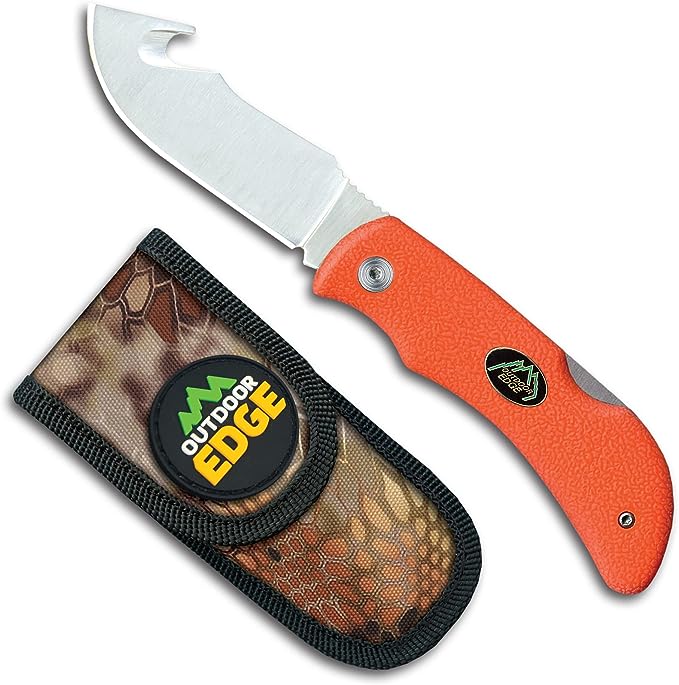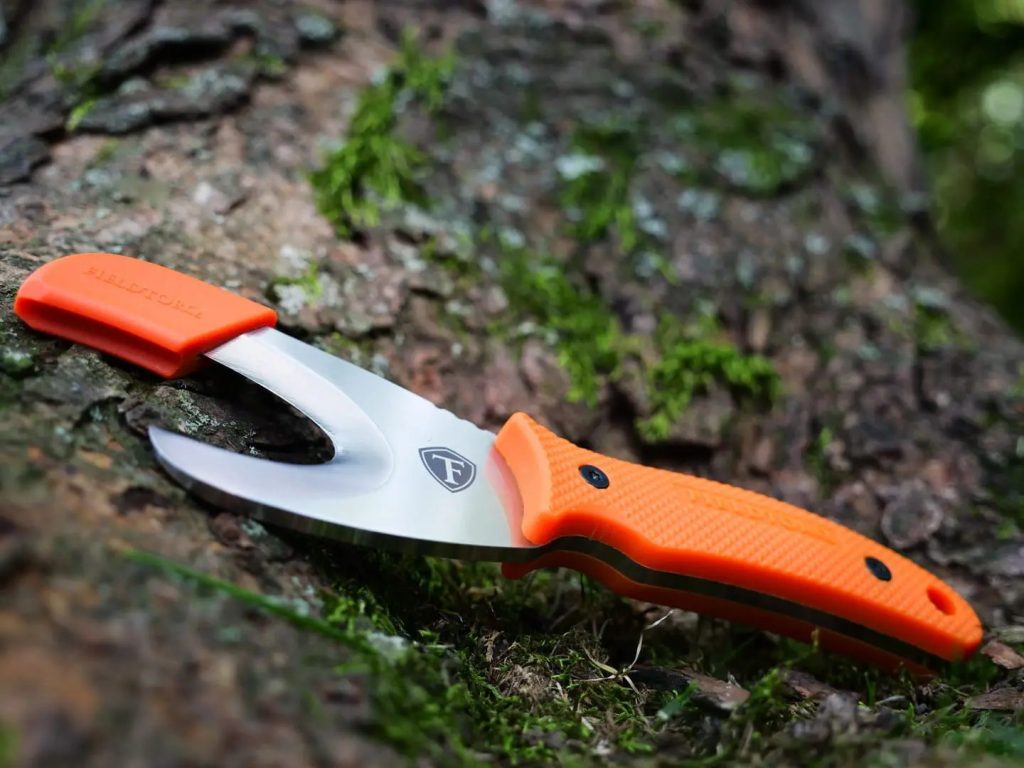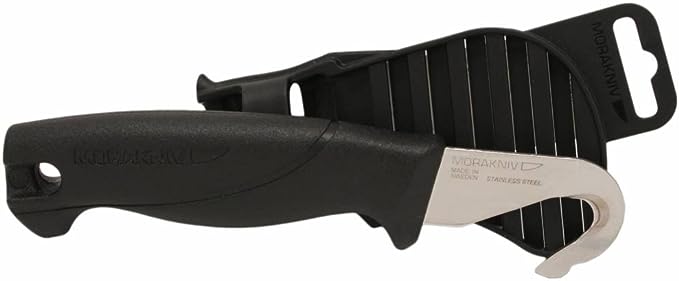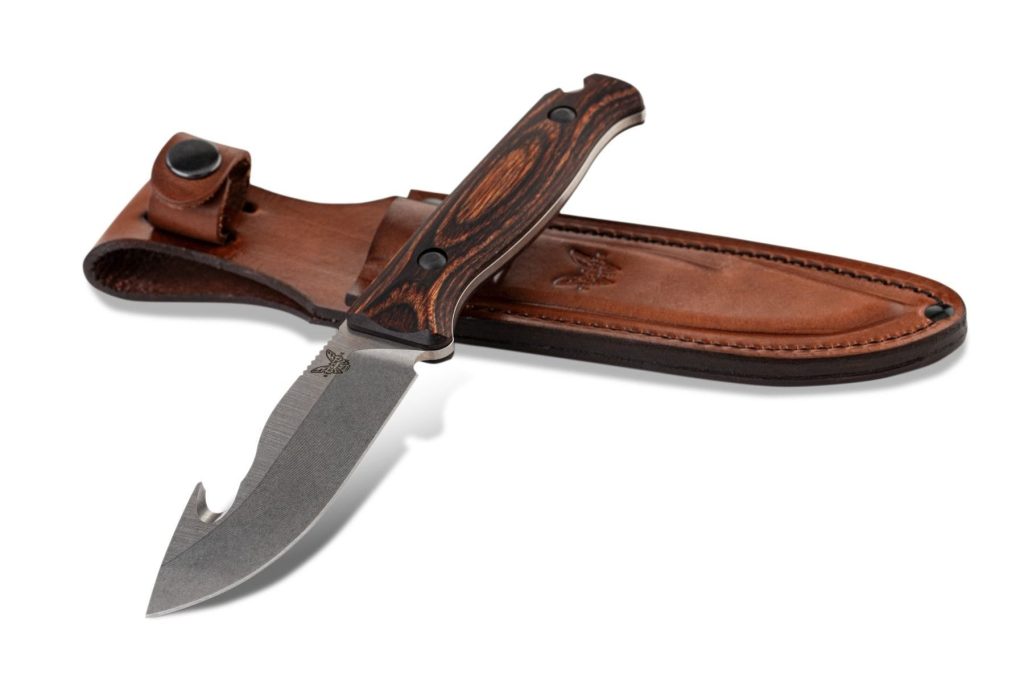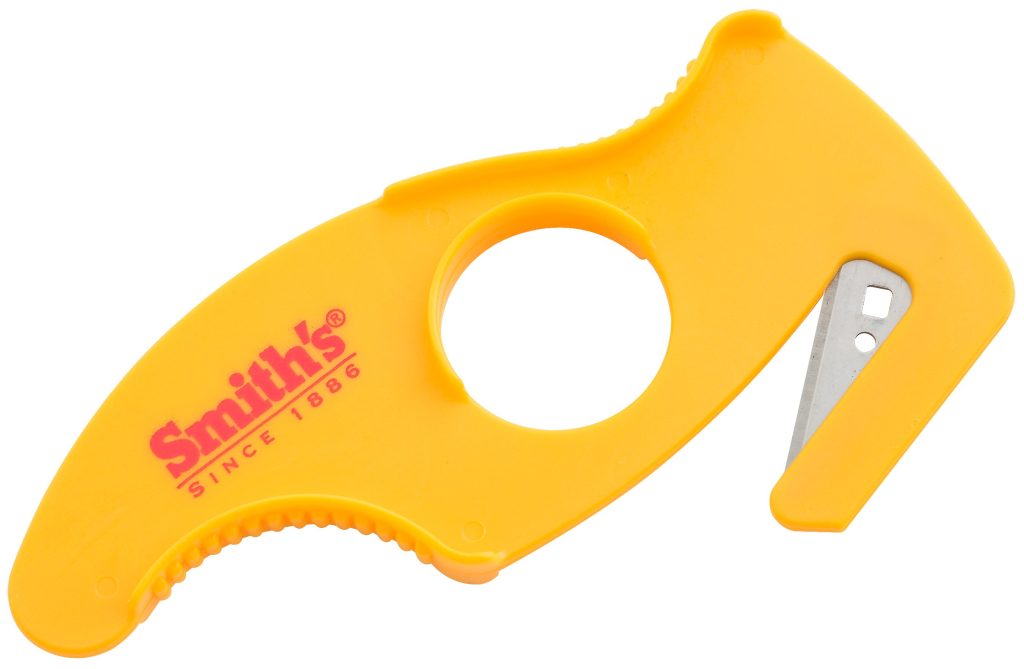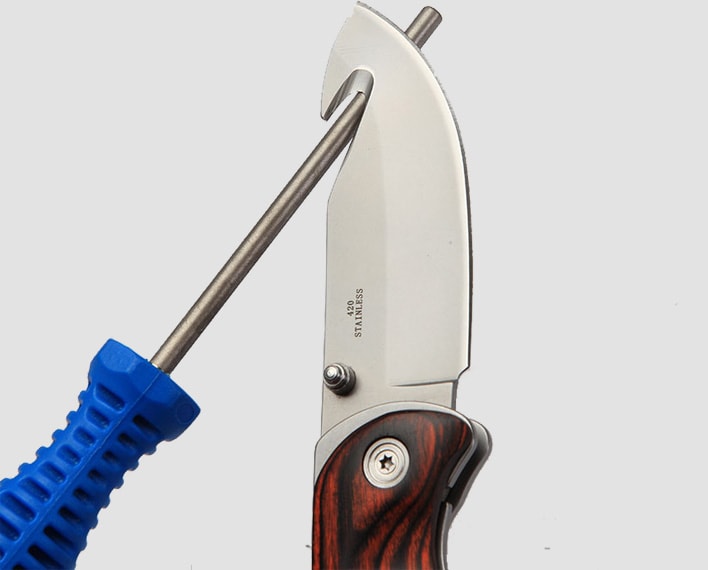A gut hook knife is specially-designed for hunters use in an attempt to make field-dressing wild game easier, safer, and cleaner. They are instantly recognizable as a distinct, backwards facing, sharpened hook on the upper side of the tip of a knife’s blade. In skilled hands, this little hook can be used to “unzip” a deer’s hide or abdominal wall in a clean manner. Gut hooks cut from the inside out, which means that hair is less likely to get on the animal’s meat. They also do not penetrate deeply, making it much harder to accidentally cut too deep and puncture internal organs.
In this article, we’ll go over the topics to consider when choosing a gut hook knife, look at a few top recommendations in different categories, and answer a few commonly-asked questions..
Best Folding Gut Hook Knife
Outdoor Edge GripHook
Outdoor Edge is a trusted name in the hunting and fishing community, and their folding gut hook knife is a staple in skinning sheds across the country. It’s lightweight and packable, and its textured orange handle provides a safe and comfortable grip while being easy to spot if you drop it in the leaves.
Best Gut Hook Knife Alternative
FieldTorq Super Tool
This next option isn’t a true gut hook knife, but it made the list because of it’s innovative design and versatility. The FieldTorq tool not only serves as an easier, cleaner way to cut through hide and unzip the abdominal cavity, but it also takes the place of a bone saw or shears. Its unique design allows it to function similarly to a can opener, leveraging its way through the pelvis and sternum when field dressing big game. It also doesn’t leave a sharp blade facing you when cleaning a deer. And it comes standard with a sharpener, which is the biggest issue with all gut hook knives.
Best Gutting Hook Knife Tool
Morakniv Belly Opener
Morakniv makes an excellent blade at an excellent price. Their simple design solves a problem common to many other gut hook knives, a sharp blade pointed towards you when you’re using the gut hook. The only downside of this design choice is that you’ll need another knife to complement this one.
Best Gut Knife
Outdoor Edge Swingblaze Double Blade Hunting Knife
The Outdoor Edge Swingblaze Double Blade Hunting Knife is an indispensable tool for hunters, offering both a sharp skinning and gutting blade that rotate effortlessly for quick and precise field dressing. Its versatility and razor-sharp blades make it the ultimate gut knife, ensuring clean and efficient game processing in the wild.
Best Skinning Knife With Gut Hook
Benchmade Saddle Mountain Skinner
Benchmade is synonymous with quality in the knife world, and this gut hook knife is ideal for hunters looking for a stylish, functional, and incredibly well made option. Its quality leather sheath and attractive hardwood handle will have your buddies admiring it around the campfire after the dirty work is done for the evening.
Best Disposable-Blade Gut Hook Knife
Smith’s Disposable Gut Hooks
Gut hook knives can be a real pain to sharpen. This disposable blade model from Smith’s Cutlery makes that a non-issue.
Best Gut Hook Sharpener
Warthog Gut Hook File
Can’t bring yourself to buy and throw away disposable blades all the time? No matter which gut hook knife you choose, if it doesn’t come with a disposable blade you’re gonna need one of these bad boys. Just go ahead and stash it in your pack next to the knife.
Gut Hook knife Points To Consider
When choosing a gut hook, there are several points to consider that can help you make an informed decision. Here are some key factors to keep in mind:
Blade Quality: Look for a gut hook knife with a high-quality blade material that offers durability and sharpness. Common blade materials include stainless steel, carbon steel, and various alloy compositions. Consider the blade’s hardness, corrosion resistance, and ease of sharpening.
Blade Size and Shape: The size and shape of the blade can affect the knife’s performance. They typically have a curved blade with a small, sharpened hook on the back. Ensure the size and shape of the blade match your specific needs, whether it’s field dressing game, skinning, or general outdoor use.
Handle Ergonomics: A comfortable handle is crucial for prolonged use and maintaining control. Look for a knife with an ergonomic design that fits well in your hand. Consider factors like handle material (such as rubber, wood, or synthetic materials), grip texture, and overall feel.
Safety Features: Safety should be a priority when selecting any knife. Look for a knife with features like a secure locking mechanism that keeps the blade in place during use and a reliable sheath to protect the blade when not in use.
Weight and Balance: Consider the weight and balance of the knife. A well-balanced gut hook knife allows for better control and reduces fatigue during extended use. It’s a matter of personal preference, so it’s a good idea to hold the knife and assess its weight distribution before making a decision.

Brand Reputation: Research the reputation of the knife manufacturer. Established brands with a track record of producing high-quality knives are often a safer choice. Read reviews and seek recommendations from experienced hunters or outdoors enthusiasts to ensure you choose a reputable brand.
Price Range: These knives are available at various price points. Set a budget and consider the value for money offered by different options. It’s generally advisable to invest in a quality knife that will last longer and perform well, especially if you plan to use it frequently.
Intended Use: Consider your specific use case. Gut hook knives are commonly used for field dressing game, but they can also serve other purposes like skinning, fishing, or general outdoor tasks. They’re also pretty handy for removing a percolator-style coffee pot from a campfire by its wire handle. Ensure the knife you choose aligns with your intended use and has the necessary features for that application.
Gut Hook Knife FAQs
Why use a gut hook knife?
Gut hooks are a specialized tool meant to make skinning and field dressing a deer less of a chore. While some experienced hunters may question the need of such a unitasker tool in your hunting pack, gut hooks are particularly useful for new or inexperienced hunters who are scared of puncturing internal organs or who may have been frustrated in the past after getting hair all over their backstraps.
What are some drawbacks of a gut hook knife?
While gut hook knives are meant to make skinning and field dressing a deer faster, easier, and safer, they have some design drawbacks that can be counterproductive to those goals.
For starters, most gut hooks require you to use the tool with the main blade exposed and facing the user. This is obviously a safety risk that is compounded by darkness or cold/slippery hands; both of which are common occurrences when cleaning a deer.
Gut hooks are also a pain to sharpen, and a dull gut hook is a useless. Many knife sharpeners will not work to sharpen a gut hook.
How do you sharpen a gut hook knife?
If you buy a gut hook knife, you’ll need a small, thin rod-style sharpener. You’ll need to use this sharpener more like a file than a conventional sharpener, since the small, narrow hook prohibits the shaving stroke typically associated with the sharpening process.
Final Thoughts On Gut Hook Knives
Ultimately, gut hook knives can be a useful specialty tool for hunters, despite their drawbacks. Whatever model you choose, be sure to keep it sharp, cut away from your body when using it, and keep it in a sheath when it’s not in use.
Happy hunting!
Full Disclosure: This post may include affiliate links. There’s no extra charge to our readers for using these.


